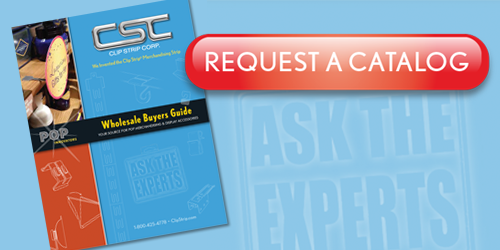Categories
Services & References
History of the Clip Strip® Video
Disruptive Retailers: What Technology Are They Using to Gain Advantage?
There are numerous benefits of using technology in your retail business.
For example, you could upgrade your pricing sign holders with smart data labeling where prices are changed electronically and instantly without printing and labeling, such as what Costco has began using on each display. All new technologies enable you to gain more advantages, like improved planning, reduced cost, and the benefits of a competitive edge.
The major three game-changing technologies in this field are Internet of Things (IoT), Wearables, and Cognitive Computing.
1. Internet of Things
Whether you need to provide your consumers a highly personalized shopping experience, maintain an intelligent product store, or you want to interact with the products remotely - for all the above scenarios, the Internet of Things – or IoT – will be a massive game changer in your retail industry.
If you think IoT is in the far off distance, well, you need to think again. The retail industry has already started to take serious movements towards this latest disruptive technology of IoT innovation.
A recent Retail Systems Research (RSR) report has proved that 72 percent of disruptive retailers already have IoT-related projects, and this result will continue to increase throughout 2016. Retailers have reported that they essentially feel more prepared and optimistic to meet this IoT challenge. The major three indicators behind IoT's success are:
- Item-Level Tracking by using Radio Frequency Identification
- Store and the Internet Convergence
- Potential benefits of automated retail industry business process
2. Wearables
In 2016, consumers will naturally begin to integrate the modern, wearable technology more into their regular lives. Your ultimate goal as a retailer would be to deliver some smart, intelligent, and fashion-forward products that will be more meaningful, trendy and desirable to your consumers.
These wearable connective devices will also provide you a new channel for targeted promotions and advertising, behavioral and location tracking, and a better customer service.
The level of customization and personalization will be indeed greater in these devices, allowing more sensitivity to your consumer's privacy and comfort. The examples of these wearable devices are a smart watch, digital eyewear, virtual reality headset, and even a smart clothing/textile.
3. Cognitive Computing & Machine Learning
This software empowers the parallel evolving of all connected devices. With an influx of Hadoop and big data, advanced processing power, data science, software intelligence, this technology buzzword, cognitive computing is helping the machines to take informed “decisions.”
If you are a retailer, you need to understand the major implications of this increasingly intelligent software.
The smart software has the potential to change the fundamental nature of software development and open up new possibilities and opportunities for you. It plays a significant role in retailers’ ability to harness the big data, especially unstructured data such as images, symbols, videos, etc.
The cognitive systems will analyze the high volumes of unstructured and structured data and help the retailers like you to make better merchandising decisions and build more effective and efficiently controlled supply networks.
Final Takeaway
The potential advantages of using these game-changing technologies are listed below:
- Improved accuracy of production plans and demand forecasts
- Reduced inventory requirements
- Reduced inventory control costs
- Improved customer satisfaction by providing more accurate responses to their requests on time
- Reduced costs and improved profitability
- Saved time through automated pricing controls







 Facebook
Facebook LinkedIn
LinkedIn YouTube
YouTube